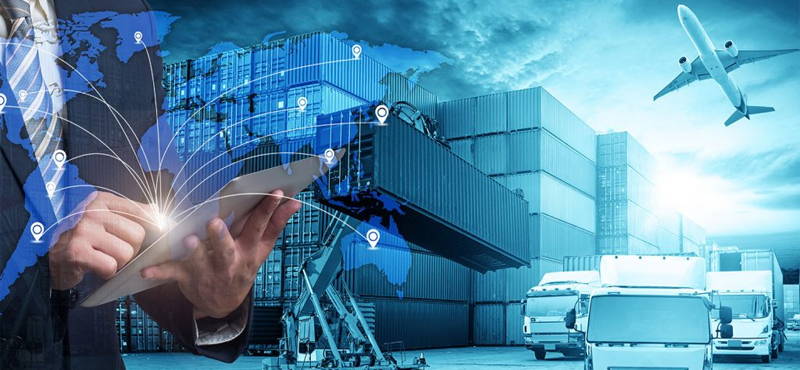Latest Developments in the Global Transportation and Logistics Industry Powered by AI

Ever since Uber ruffled global Transport and Logistics leaders with its 120-mile driverless end-to-end haul of 51,000 Budweiser cans, the Transport and Logistics world is anticipating public dissemination of unmanned vehicles with open wide eyes. By 2023, the global market for AI in logistics is expected to reach USD 3.5 billion. And why not? Because AI-enabled fleets bring:
Increased Productivity.
Reduced response time.
Better end-to-end process monitoring.
Accurate deliveries.
Better quality at lower cost.
Better customer need analysis.
Fewer accidents.
Energy-efficient modes. Reduced carbon emissions.
Slashed costs
Blue-chip companies are harnessing AI to fine-tune and update core strategies and to improve real-time decision-making. Current uses of AI in the Transport and Logistics industry are centered around; Identifying warehouse locations; finalizing the availability, inventories, costs, carriers, transport, and people; conducting capacity planning; and forecasting demand. While AI functions as the skeleton and brain of this far-reaching body, data runs as the lifeblood powering this change.
In this article, we cover some of the most dominant developments AI is steering in the global Transport and Logistics maze. While on one hand, AI is automating, streamlining and smoothening warehouse operations, on the other, it is optimizing the supply chain for maximum cost control.
AI and Intelligent Warehousing:
Automation seems to have captured the burning buzz in this category but the use of IoT and computer vision must not be discounted.
Robotics:
Robots track, move and locate inventories inside the warehouses. These robots are equipped with deep learning algorithms that help them make autonomous decisions in line with the warehouse processes.
Use case: The UK Grocer, Ocado’s, Andover warehouse is run by robots. Every week this warehouse delivers 3.5 million grocery items. Robots pick, lift and move the items and, once these items are sorted, they are packed and transported by Ocado’s employees.
Computer vision:
The present use of computer vision is limited to monitoring with the help of videos and images. However, this also seems to be the end goal of automated warehousing wherein AI is expected to identify, organize and monitor the quality of the inventories, and also ensure safety in the premises.
Use case: Floreac, a pot plant distributor in Europe, is using computer vision for 100% accurate shipments and reduction in customer complaints.
IOT:
In the 1990’s, global communication boom aka internet shook the world, now interlinked communication Big Bang is mutating machines. Smart road technology connects drivers with “traffic reports and road hazard warnings”. The sensor slabs can sense any disruption or mishap and can notify emergency services in real-time. IoT is also assisting in the push and pull inventory planning such as raw materials, packaging, etc.
Use case: Colorado’s Department of Transportation is testing this technology on its notoriously accident-prone Highway-285.
AI and Intelligent Supply Chain:
The Intelligent Supply Chain has changed the transportation game for all stakeholders involved. Machines can now self-optimize themselves. They are constantly learning and consistently improving. Contextual intelligence can be used for improved inventory management, client communication and cutting operational costs. Transporters can now predict the vehicle’s arrival time, optimize routes and simulate complex routes.
Big Data:
According to the “21st Annual Third Party Logistics Study”, 98% of third-party suppliers have said big data is “essential to the future success of supply chain activities and processes.” In the same study, 81% of carriers and 86% of third party suppliers said big data will become “a core competency of their supply chain organizations” and, 70% of respondents said big data can be best used to improve “logistics optimization.”
Use case: UPS used big data to discover that their vehicles turning left were causing maximum delays, consuming more fuel and causing maximum risks. By limiting these turns, UPS saved 10 gallons of fuel, curtailed its carbon dioxide emissions by 20,000 tonnes, and delivered 350,000 more packages per year.
IOT:
With IoT-enabled devices, suppliers can conveniently track their shipment and do real-time monitoring. This significantly helps in preventive and corrective measures. IoT gives one-stop floor-to-store solution.
Use Case: Hamburg Port Authority, the second busiest port in Europe, is using IoT for fleet management, monitoring traffic and other operations. These devices drive rail, ship and road traffic.
Machine Learning:
Machine Learning is driving the most extensive developments by pushing data insights and helping companies choose demand-centric and cost-effective locations for their fleets to operate. With the help of supervised learning, unsupervised learning and reinforcement learning, AI can improve the performance of the supply chain. Modern machine learning solutions are 50% more accurate than previous ARIMA and Exponential Smoothing methods.
Use case: Global retailer Target is using AI to refine its delivery process.
Developments with Most Potential:
The two most anticipated developments by 2023 are autonomous vehicles and platooning.
Autonomous vehicles:
Major developments are expected in assisted-braking, highway autopilot and lane-assist. Multiple trucks can come together to make formations for lower fuel consumption. Some of the biggest names in Technology are pursuing driverless technology, including Apple, Google, Daimler-Benz.
Platooning:
A convoy of many trucks using “sensors, radars and vehicle-to-vehicle communications. “A single driver can command this fleet. DHL is experimenting with this technology at present.
Wrap Up:
The future has already begun. In 2017, the International Transport Forum (ITF) published its report giving guidelines for governments to transition to driverless roads. 65% of high-level transport advisors say they foresee a transportation renaissance on the horizon.Disruptive technologies mainly Artificial intelligence, IoT and machine learning are at the core of this stir. These technologies have brought truckloads of data for trucks, this time not to be transported but to be made sense of. However, regulations can prove to be an impediment.





